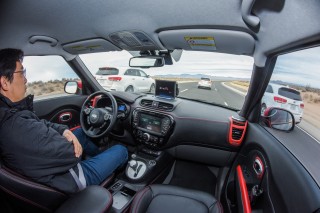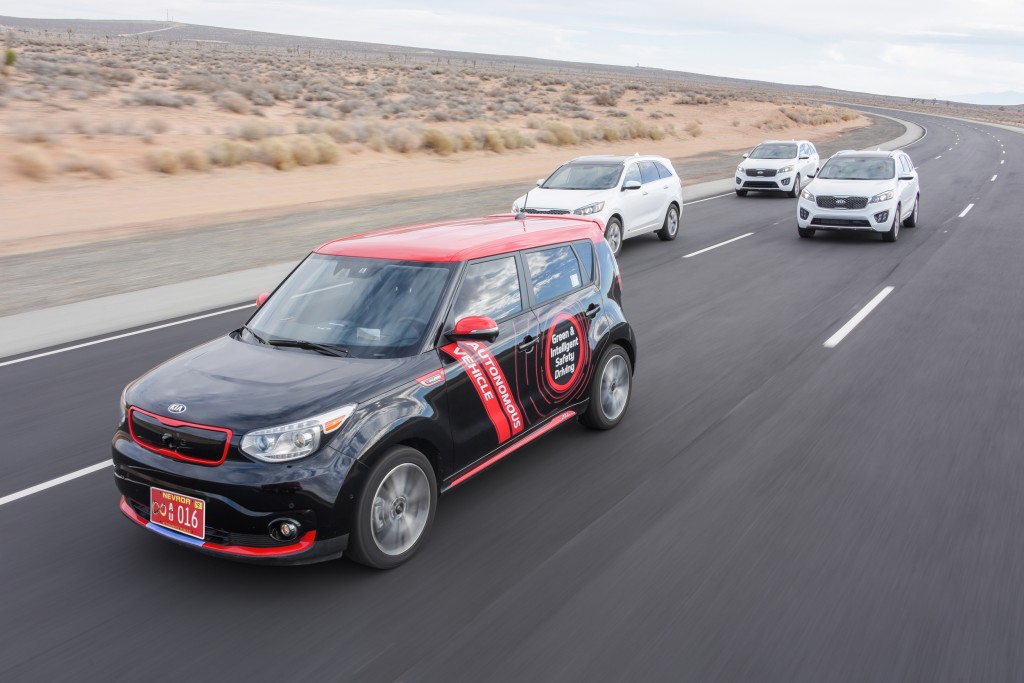Kia introduced its “drive wise” intelligent safety technologies vision and roadmap for the fully autonomous vehicle earlier this year.
Drive wise is a $2 billion investment program over the next two years that will enable Kia to introduce intelligent safety technologies to its future model range, help to eliminate potential dangers and, for many, eradicate the boredom of driving.
The car manufacturer plans to introduce partially-autonomous driving technologies by 2020, with the arrival of fully-autonomous vehicles targeted by 2030. Nevada has already granted license to Kia to test the autonomous Kia Soul EV on public roads.
“Kia is undergoing a very promising and gradual process of introducing partially and fully autonomous technologies to its vehicles,” said Tae-Won Lim, Hyundai Motor Group’s senior vice president of central advanced research and engineering institute. “Although the first marketable fully-autonomous car from Kia will not be available in the immediate future, the work our (research and development) teams are currently doing to develop our range of drive wise technologies is already improving on-road safety and driver assistance.”
Henry Bzeih, Kia’s chief technology strategist, joined [a]listdaily to talk about autonomous driving vehicles, how Kia is alleviating concerns behind it and how they reach their consumers.
How are you marketing to consumers who have safety concerns with autonomous driving vehicles?
We would not put a product on the road that we don’t feel confident and comfortable about. That’s No. 1. You could imagine the amount of rigorous testing and development that goes into making a product and putting it on the road, including simulation. From the marketing standpoint, that’s just the machine that helps them send the message. Obviously, having the ability to have customers engaged early is important. There is a demographic element that we need to think about, too. Some demographics like millennialsand digital natives are open-minded to this type of technology than others. It’s going to take a generational change, which is why we’re looking at 2025 and 2030 as realistic dates for these types of vehicles to cement this technology in the minds of people who haven’t accepted it. We’re not going to sit here and say ‘everybody wants it.’ But we certainly anticipate the acceptance.
What are specific strategies you’ll be using to execute that 10-to-15-year plan?
Any large company that wants to be in business has to have some level of plan. It’s not something we just came up with. We do have a very solid plan on how we’re going to get there.

How are you garnering the attention of the millennials and digital natives?
It’s definitely about disruption at its finest. You can’t communicate the classic way, but the new way. So we have a whole team at headquarters using our networks to communicate the strategy with customers.
What are some new ways you’re trying to reach your audience?
We did our first press conference at CES. We also did “ride and drives.” This is definitely our first step into communicating more and making our plans more knowledgeable.
How is Kia using virtual and augmented reality moving forward?
At CES, we had a station purely centered around VR integrating the autonomous technology into the experience with the Oculus gear. I can not comment specifically on what we’re doing, but I can tell you that both VR and AR are two important elements as part of our strategy today, and moving forward. Down the road, though, keep your eyes open for some announcements.

